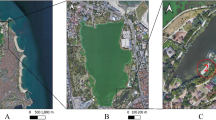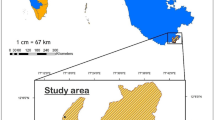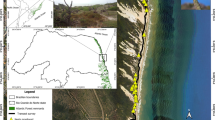Abstract
Food-hoarding animals are expected to preferentially cache items with lower perishability and/or higher consumption time. We observed arctic foxes (Alopex lagopus) foraging in a greater snow goose (Anser caerulescens atlanticus) colony where the main prey of foxes consisted of goose eggs, goslings, and lemmings (Lemmus and Dicrostonyx spp.). We recorded the number of prey consumed and cached and the time that foxes invested in these activities. Foxes took more time to consume a goose egg than a lemming or gosling but cached a greater proportion of eggs than the other prey type. This may be caused by the eggshell, which presumably decreases the perishability and/or pilfering risk of cached eggs, but also increases egg consumption time. Arctic foxes usually recached goose eggs but rarely recached goslings or lemmings. We tested whether the rapid-sequestering hypothesis could explain this recaching behavior. According to this hypothesis, arctic foxes may adopt a two-stage strategy allowing both to maximize egg acquisition rate in an undefended nest and subsequently secure eggs in potentially safer sites. Foxes spent more time carrying an egg and traveled greater distances when establishing a secondary than a primary cache. To gain further information on the location and subsequent fate of cached eggs, we used dummy eggs containing radio transmitters. Lifespan of primary caches increased with distance from the goose nest. Secondary caches were generally located farther from the nest and had a longer lifespan than primary caches. Behavioral observations and the radio-tagged egg technique both gave results supporting the rapid-sequestering hypothesis.





Similar content being viewed by others
References
Anthony RM (1997) Home ranges and movements of arctic fox (Alopex lagopus) in western Alaska. Arctic 50:147–157
Bêty J, Gauthier G, Korpimäki E, Giroux J-F (2002) Shared predators and indirect trophic interactions: lemming cycles and arctic-nesting geese. J Anim Ecol 71:88–98
Board RG, Fuller R (1974) Non-specific antimicrobial defenses of the avian egg embryo and neonates. Biol Rev Camb Philos Soc 49:15–49
Brodin A (1993) Low rate of loss of Willow Tit caches may increase adaptiveness of long-term hoarding. Auk 110:642–645
Careau V (2006) Comportement de mise en réserve du renard arctique dans une colonie d’Oies des neiges à l’île Bylot, Nunavut. MSc Thesis. Université du Québec à Montréal
Careau V, Lecomte N, Giroux JF, Berteaux D (2007) Common ravens raid arctic fox food caches. J Ethol 25:79–82
Clarke MF, Kramer DL (1994) The placement, recovery, and loss of scatter hoards by eastern chipmunks, Tamias striatus. Behav Ecol 5:353–361
Conover WJ, Iman RL (1981) Rank transformations as a bridge between parametric and nonparametric statistics. Am Stat 35:124–129
Daly M, Jacobs LF, Wilson MI, Behrends PR (1992) Scatter hoarding by Kangaroo Rats (Dipodomys merriami) and pilferage from their caches. Behav Ecol 3:102–111
DeGange AR, Fitzpatrick JW, Layne JN, Woolfenden GE (1989) Acorn harvesting by Florida scrub jays. Ecology 70:348–356
Eide NE, Jepsen JU, Prestrud P (2004) Spatial organization of reproductive Arctic foxes Alopex lagopus: response to changes in spatial and temporal availability of prey. J Anim Ecol 73:1056–1068
Eide NE, Eid PM, Prestrud P, Swenson JE (2005) Dietary responses of arctic foxes Alopex lagopus to changing prey availability across an Arctic landscape. Wildlife Biol 11:109–121
Elmhagen B, Tannerfeldt M, Verucci P, Angerbjorn A (2000) The arctic fox (Alopex lagopus): an opportunistic specialist. J Zool 251:139–149
Frafjord K (1993) Food habits of arctic foxes (Alopex lagopus) on the western coast of Svalbard. Arctic 46:49–54
Gauthier G, Bêty J, Giroux JF, Rochefort L (2004) Trophic interactions in a high arctic goose colony. Integral and Comparative Biology 44:119–129
Gendron RP, Reichman OJ (1995) Food perishability and inventory management—a comparison of 3 caching strategies. Am Nat 145:948–968
Hadj-Chikh LZ, Steele MA, Smallwood PD (1996) Caching decisions by grey squirrels: a test of the handling time and perishability hypotheses. Anim Behav 52:941–948
Jacobs LF (1992) The effect of handling time on the decision to cache by grey squirrels. Anim Behav 43:522–524
James PC, Verbeek NAM (1983) The food storage behaviour of the northwestern crow. Behaviour 85:276–291
James PC, Verbeek NAM (1984) Temporal and energetic aspects of food storage in northwestern crows. Ardea 72:207–215
Jenkins SH, Peters RA (1992) Spatial patterns of food storage by merriam kangaroo rats. Behav Ecol 3:60–65
Jenkins SH, Rothstein A, Green WCH (1995) Food hoarding by merriams kangaroo rats—a test of alternative hypotheses. Ecology 76:2470–2481
Kotler BP, Brown JS, Hickey M (1999) Food storability and the foraging behavior of fox squirrels (Sciurus niger). Am Midl Nat 142:77–86
Macdonald DW (1976) Food caching by red foxes and some other carnivores. Z Tierpsychol 42:170–185
Machlis L, Dodd PWD, Fentress JC (1985) The pooling fallacy: problems arising when individuals contribute more than one observation to the data set. Z Tierpsychol 68:201–214
Nur N, Holmes AL, Geupel GR (2004) Use of survival time analysis to analyze nesting success in birds: an example using loggerhead shrikes. Condor 106:457–471
Orians GH, Pearson NE (1979) On the theory of central place foraging. In: Horn DJ, Mitchell R, Stair GR (eds) Analysis of ecological systems. Ohio State University Press, Colombus, OH, pp 155–177
Partridge L, Green P (1985) Intraspecific feeding specializations and population dynamics. In: Sibly RM, Smith RH (eds) Behavioural ecology. Blackwell, Oxford, UK, pp 207–226
Phillips DP, Ryon J, Danilchuk W, Fentress JC (1991) Food caching in captive coyotes: stereotypy of action sequence and spatial distribution of cache sites. Can J Psychol 45:83–91
Pinheiro JC, Bates DM (2000) Mixed-effects models in S and S-PLUS. Springer, New York
Post D, Reichman OJ (1991) Effects of food perishability, distance, and competitors on caching behavior by eastern woodrats. J Mammal 72:513–517
Prestrud P (1992) Food habits and observations of the hunting behaviour of arctic foxes, Alopex lagopus, in Svalbard. Can Field Nat 106:225–236
Reed A, Hughes RJ, Gauthier G (1995) Incubation behavior and body mass of female Greater Snow Geese. Condor 97:993–1001
Reichman OJ (1988) Caching behavior by eastern woodrats, Neotoma floridana, in relation to food perishability. Anim Behav 36:1525–1532
Richardson H, Verbeek NAM (1986) Diet selection and optimization by Nortwestern crows feeding on Japanese littleneck clams. Ecology 67:1219–1226
Roth JD (2003) Variability in marine resources affects arctic fox population dynamics. J Anim Ecol 72:668–676
Samelius G, Alisauskas RT (2000) Foraging patterns of arctic foxes at a large arctic goose colony. Arctic 53:279–288
SAS Institute (2003) SAS/STAT user’s guide. Release 9.1. SAS Institute, Cary, NC
Sklepkovych BO, Montevecchi WA (1996) Food availability and food hoarding behaviour by red and arctic foxes. Arctic 49:228–234
Smallwood PD, Peters WD (1986) Gray squirrel food preferences: the effects of tannin and fat concentration. Ecology 67:168–174
Smallwood PD, Steele MA, Faeth SH (2001) The ultimate basis of the caching preferences of rodents, and the oak-dispersal syndrome: tannins, insects, and seed germination. Am Zool 41:840–851
Smith CC, Reichman OJ (1984) The evolution of food caching by birds and mammals. Ann Rev Ecolog Syst 15:329–351
Stickney A (1991) Seasonal pattern of prey availability and the foraging behavior of arctic foxes (Alopex lagopus) in a waterfowl nesting area. Can J Zool 69:2853–2859
Tableman M, Kim JS (2004) Survival analysis using S: analysis of time-to-event data. Chapman & Hall/CRC, Boca Raton, FL
Tamura N, Hashimoto Y, Hayashi F (1999) Optimal distances for squirrels to transport and hoard walnuts. Anim Behav 58:635–642
Tannerfeldt M, Angerbjorn A (1998) Fluctuating resources and the evolution of litter size in the arctic fox. Oikos 83:545–559
Vander Wall SB (1990) Food hoarding in animals. University of Chicago Press, Chicago, IL
Vander Wall SB (1995) Dynamics of yellow pine chipmunks (Tamias amoenus) seed caches: underground traffic in bitterbrush seeds. Écoscience 2:261–266
Vander Wall SB, Jenkins SH (2003) Reciprocal pilferage and the evolution of food-hoarding behavior. Behav Ecol 14:656–667
Vander Wall SB, Joyner JW (1998) Recaching of Jeffrey pine (Pinus jeffreyi) seeds by yellow pine chipmunks (Tamias amoenus): potential effects on plant reproductive success. Can J Zool 76:154–162
Acknowledgements
We thank Gabrielle Darou, Marie-Andrée Giroux, Nicolas Lecomte, Ambroise Lycke, and Guillaume Szor for assistance and inspiration in the field. Gilles Gauthier provided logistic support and data on lemming abundance. We are indebted to the Hunters and Trappers Association of Pond Inlet, Nunavut Territory for supporting this study. VC is grateful to Sanimal for a scholarship and to Mountain Equipment Coop for camping equipment. Funding and logistic support were provided by Polar Continental Shelf Project, Fonds Québécois de la Recherche sur la Nature et les Technologies, Nunavut Wildlife Management Board, Parks Canada, Northern Scientific Training Program (Indian and Northern Affairs Canada), Canada Foundation for Innovation, Natural Sciences and Engineering Research Council of Canada, Canada Network of Centres of Excellence ArcticNet, and Canada Research Chair Program. We thank the Behavioral Ecology discussion group at McGill University and the GRÉCA (Groupe de Recherche en Écologie Comportementale et Animale) at UQÀM for fruitful discussions, especially Denis Réale for statistical advice. This manuscript greatly benefited from comments by Kimberley Mathot, Don Kramer, and three anonymous reviewers. This is Polar Continental Shelf Project contribution no 021-07.
Author information
Authors and Affiliations
Corresponding author
Additional information
Communicated by E. Korpimäki
Rights and permissions
About this article
Cite this article
Careau, V., Giroux, JF. & Berteaux, D. Cache and carry: hoarding behavior of arctic fox. Behav Ecol Sociobiol 62, 87–96 (2007). https://doi.org/10.1007/s00265-007-0441-z
Received:
Revised:
Accepted:
Published:
Issue Date:
DOI: https://doi.org/10.1007/s00265-007-0441-z




